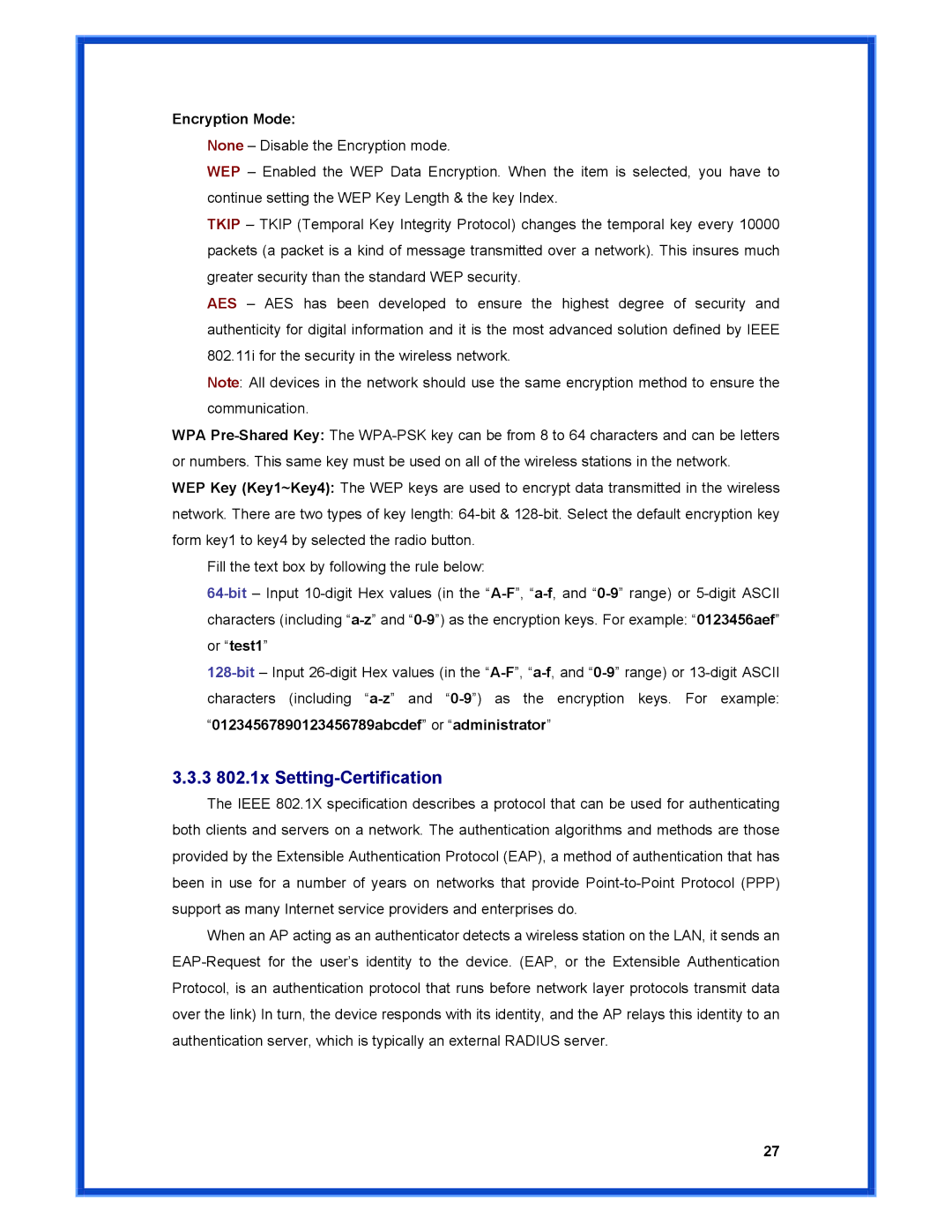
Encryption Mode:
None – Disable the Encryption mode.
WEP – Enabled the WEP Data Encryption. When the item is selected, you have to continue setting the WEP Key Length & the key Index.
TKIP – TKIP (Temporal Key Integrity Protocol) changes the temporal key every 10000 packets (a packet is a kind of message transmitted over a network). This insures much greater security than the standard WEP security.
AES – AES has been developed to ensure the highest degree of security and authenticity for digital information and it is the most advanced solution defined by IEEE 802.11i for the security in the wireless network.
Note: All devices in the network should use the same encryption method to ensure the communication.
WPA
WEP Key (Key1~Key4): The WEP keys are used to encrypt data transmitted in the wireless
network. There are two types of key length:
Fill the text box by following the rule below:
3.3.3 802.1x Setting-Certification
The IEEE 802.1X specification describes a protocol that can be used for authenticating both clients and servers on a network. The authentication algorithms and methods are those provided by the Extensible Authentication Protocol (EAP), a method of authentication that has been in use for a number of years on networks that provide
When an AP acting as an authenticator detects a wireless station on the LAN, it sends an
27
